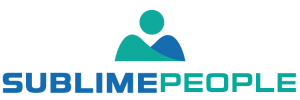You have just taken the first big step in growing your business—it’s time to hire employees. As exciting as this can be, the hiring manager needs to take the proper precautions and ensure you are hiring the best candidate for the job. To make sure that happens, you need to define a strict set of hiring criteria. In this post, we will walk you through the essential steps needed to create an effective list of qualifications when investing in new employees.
After reading, you should have a better understanding of how clearly defining your hiring criteria can help lead to successful recruitment results.
In this Article:
What is the hiring criteria?
Hiring criteria involves the must-haves for hiring the right candidate to fit the company, team, and future needs. It involves hiring based on skills (both technical and soft), experience, qualifications, personality traits, and more. Understanding your organization’s culture is key in hiring the right person as they should be a team player who can fit into the existing work environment.
What are the 5 most important criteria to consider when making selection decisions?
The hiring process is an important step in the recruitment process. Hiring managers must take time to clearly define what they are looking for in each job description. Clear selection criteria make it easier to determine which candidate meets your desired qualifications and will be able to perform their tasks successfully. This includes considering organizational performance needs, company culture, fellow employees, specific skills, and top talent. It is also important to evaluate the hiring decision in terms of the new employee’s learning curve and necessary skills for success.
1. Ability and skill set
A candidate should have the necessary qualifications and experience that make them qualified for the role. It is important to assess their ability to succeed in the required tasks, as well as an understanding of their skillset that could add value to the organization. The level of technical proficiency of a candidate should also be considered, such as knowledge of industry-standard software and hardware or familiarity with specific coding languages.
2. Understanding of the company
It is important to hire someone who understands and believes in the company’s mission and values. An organization’s culture is essential in every team dynamic, so it is important to hire someone who understands and values the company’s mission and values. Understanding how they will contribute to a positive workplace culture should be taken into account when making hiring decisions, including whether they will gel with existing members of staff.
3. Job performance
It’s important to review how a potential hire has performed in past roles. This can be done both through references from previous employers and by looking at their educational track record (e.g., professional certifications). This helps hiring managers get an idea of the level of success they can bring to the organization in terms of meeting deadlines, maintaining quality standards, and dealing with difficult situations.
4. Motivation & Enthusiasm
Hiring someone motivated and passionate about their work can help bring enthusiasm and energy into an organization. This enables new employees to think outside the box more readily, introducing fresh perspectives into a workspace that could lead to innovation or improvements in processes or products.
5. Skills & experience
Consider hiring based on specific skills, knowledge, qualifications, and expertise to ensure the candidate meets your hiring criteria. It’s important to evaluate an applicant’s experience to determine if they have the necessary skills and knowledge that can contribute to the team. Furthermore, it is important to assess their commitment level, as well as how they view money and effort in terms of their work.
What are the 5 stages of the hiring process?
The hiring criteria is an essential criterion that organizations, businesses, and recruiters need to consider before hiring a new employee. There are various stages of the hiring process that employers must go through before they can make the right hiring decision. These stages include:
1. Job description & posting
The first step in the hiring process is to create a job description and post it on various job boards or websites. write the description in such a way that it will attract the right applicants with the necessary qualifications and experience. This helps to attract potential applicants and gives employers an idea of what they should be looking for when considering candidates.
2. Application
The application phase of the selection process is often seen as a menial task for hiring teams – simply waiting for candidates to respond to your job ad. Nevertheless, applications can be employed as powerful assessment tools that help distinguish between qualified and unqualified applicants.
Wondering how to start? You can jump-start your journey with two popular solutions – asking qualifying questions and gamification.
Qualifying questions: Asking relevant questions during the application phase can help to weed out unqualified applicants, assess language and communication skills, identify cultural fit, evaluate problem-solving abilities, and more.
Gamification: Gamification can be a great way to engage potential candidates right away, assess their capabilities, and separate them into buckets based on performance. Incorporating gamification into the recruitment process isn’t anything new, yet with current technology, you can particularly make use of these tools more efficiently during the selection procedure. Especially for those who are less experienced or come from other industries and backgrounds, consider getting them to play online or offline games at the application stage, so you can properly assess their skills and abilities.
3. Screening
After receiving applications, employers can begin to screen and interview potential candidates. Using a screening questionnaire is an effective way to evaluate candidates more accurately. The aim here is to identify the most suitable candidate with the necessary skills and qualifications for the job, as well as someone who fits in with your team dynamics and company culture. By incorporating questions related to experience, roles, goals, values, competencies, and even specific job-related tasks, your organization can easily identify the right candidate for the job.
The screening call, or phone screen, is also an important part of the process. This is a great opportunity to assess the applicant’s language and communication skills, establish their level of interest in the position, gauge their enthusiasm, and determine if they are indeed a suitable match for the job.
During the screening call, ensure you ask questions that both determine the candidate’s suitability and assess their enthusiasm for the role. Keep skill-related queries to later stages of recruitment; instead, focus on gaining an understanding of whether they are a good fit at this stage. There are many ways to filter resumes:
Background
This includes things like checking criminal records, reference checks, and verifying educational credentials.
Resume layout
Showcasing their proficiency in organization and brevity, a candidate’s resume layout can be an effective signalling device of how suitable they are for the job. Presenting information succinctly while remaining clear is essential here. Take a look at the formatting of resumes, as well as looking for typos and errors.
Cover letter
A candidate’s cover letter, much like their resume, gives you a peek into who they are and what value they can bring to the role. When reading through them, make sure to look out for well-crafted phrases that showcase how exactly they could contribute positively to this position. Does the candidate seem passionate and articulate?
Intangibles
At first glance, including your hobbies and interests in a resume may appear frivolous; however, these can be powerful indicators of who you are as an individual. Therefore, they should not be overlooked when writing your resume. For instance: If a candidate has attended language classes or cultural activities, this could be a great indicator of their commitment and passion for learning.
4. Assessment
After you’ve screened and sorted through potential candidates, take the time to thoroughly assess those who made it past the initial evaluation stage.
There are many different types of assessments available for this part of the selection process. For instance, cognitive assessments can help employers identify applicants who possess the necessary skills and abilities to excel in a given role. This could include aptitude tests and competency-based interviews that focus on problem-solving capabilities, as well as personality tests to determine how an individual will fit into the team dynamic.
These assessment tools can be incredibly helpful when it comes to evaluating the right applicant for the job. However, it’s important to remember that assessments alone should not be used as the sole basis for making a hiring decision.
5. In-person interviewing
After an exhaustive process of reviewing candidates, evaluating their talents, and judging each individual’s capabilities, you have finally come down to a select few that appear the most promising. Now it’s time to meet these prospective hires in person and make your final decision on who will join your team next.
The in-person interview is an opportunity for employers to ask more detailed questions, gain an understanding of a candidate’s personality and motivation, as well as assess how they would fit into the company culture. During this stage in the recruitment process, hiring managers should strive to get a sense of who a potential employee is and what kind of value they can bring to the company.
It’s also a good idea to involve other stakeholders in the interview process, such as fellow employees or supervisors who are familiar with the job requirements and team dynamics. This will give you a better understanding of whether an applicant can meet those expectations and fit into the team environment.
At the same time, interviewers should look for signs that demonstrate an applicant’s commitment to the role. Signs such as a candidate’s enthusiasm and dedication, ability to think on their feet, or willingness to go the extra mile are all important indicators of how they will perform in the future.
Once you have completed the final step of interviews, it’s time to make a decision and choose the best applicant for the job. By following an organized hiring process, you are sure to find the right candidate who will become a valuable asset to your team.
Conclusion
By taking the time to define your criteria for a successful hire, you can avoid costly mistakes. By taking into account all aspects of each candidate—from their skillset, personality traits, and potential fit within your team—you can confidently select the right person to help your organization reach its goals and objectives. By using these steps, you will be able to confidently narrow down your pool of candidates and end up with the best possible employees for your company. Remember, hiring is an investment in your company’s future. Make sure you hire based on the criteria that matter most for organizational success. What are some other ways that you ensure that you find the right employees?


